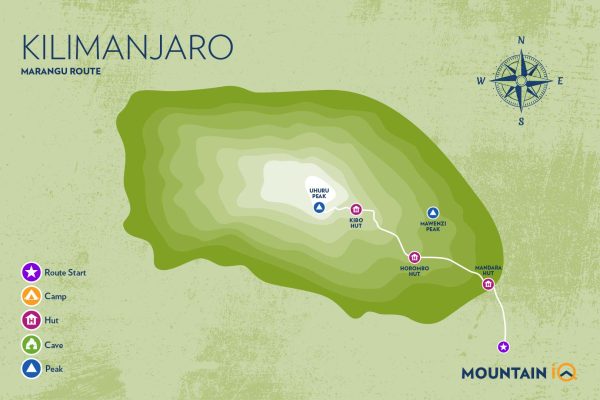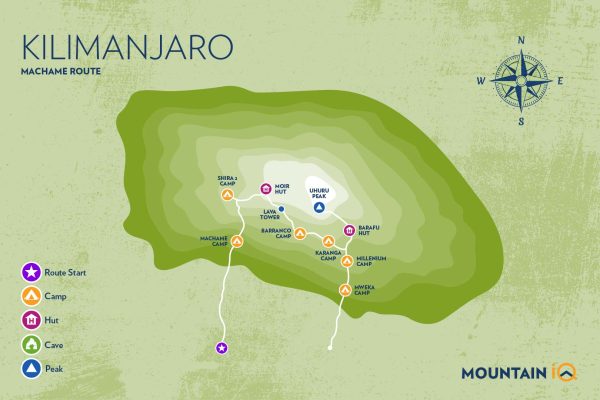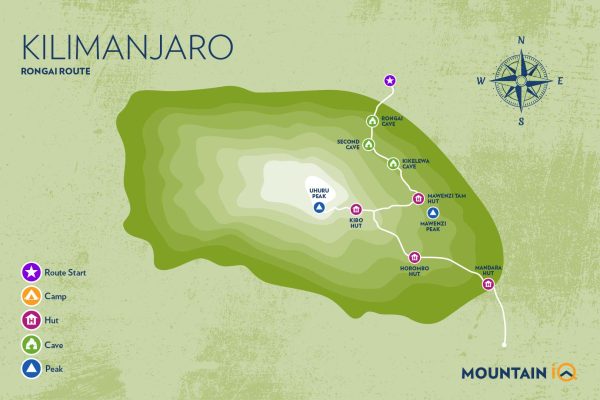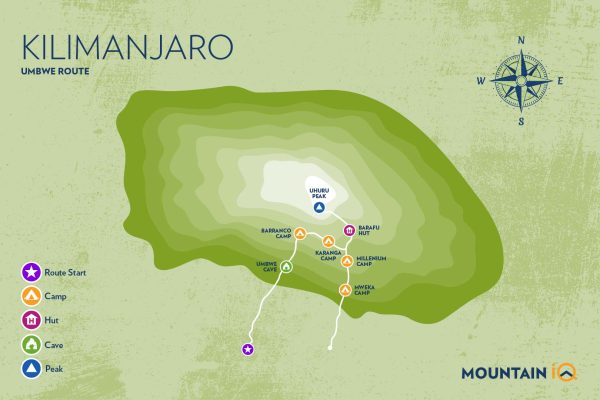Ultimate Kilimanjaro: Climbing Kilimanjaro A Beginner’s Guide
Ultimate Kilimanjaro: Climbing Kilimanjaro A Beginner’s Guide. Luxury Kilimanjaro climbing tours offer premium amenities like private tents with real beds, hot showers, gourmet meals, and personal valets for a comfortable and high-end experience, with costs ranging from approximately $5,000 to over $12,000 per person, depending on the chosen package and level of exclusivity. We’re going to talk about how to climb Mount Kilimanjaro, which is the most famous mountain in Africa and one of the Seven Summits. Kilimanjaro is the highest mountain in Africa (5,895m) and the highest free-standing mountain in the world. This is the most clear reason why most people choose to climb it.
For many, the story of hiking Mt. Kilimanjaro starts with Hans Meyer, who was the first person from Europe to reach the top in 1889. Fewer people know about Sheila McDonald, who was the first woman to climb Kilimanjaro and drink champagne at the top. Her story may be even more moving, though. From rain-forests and alpine deserts to the Arctic, you might want to climb a mountain with a wide range of environments and weather conditions. Or it could be the hope of an exciting adventure in Africa, like the ones in John Henry Patterson’s journals.
To climb Mount Kilimanjaro, though, the real beauty is in the little things. They start in the country parts of Tanzania, before you even get to the base of the mountain. The Swahili people are introduced to you here. Their friendly nature and slow pace will make your trip more enjoyable. ‘Safari’ in Swahili means a journey, and Kilimanjaro is both a physical and figurative journey.
Mount Kilimanjaro isn’t just a rock to climb. You climb it for the fun and the people you meet. From the songs and laughs around the campfire that make you feel better to the soft sounds of “lala salama” (sleep quietly) as you curl up in your sleeping bag at night. Before you even start your climb, you will fall in love with Tanzania while watching over you from the mountain.
The process of planning a trip can be scary for people who have never been to Mount Kilimanjaro before. Our guide for people who have never climbed Kilimanjaro before will make the process easier, answer some of the most common questions, and help you plan the best hiking trip of your life.
Luxury Kilimanjaro Trekking Tours
Luxury Kilimanjaro trekking tours offer higher comfort levels on the mountain, including quality gear, gourmet food, more staff, and potentially features like private bathrooms and hot showers. Companies like Kilimanjaro Trekking Services and Kabira Safaris Africa provide options for different routes like the popular Machame or scenic Lemosho, with packages ranging from basic luxury to VIP services with helicopter transfers. Key components of a luxury package include all park fees, crew wages, food, water, transport, and gear.
Marangu Route/Coca-Cola Route: 5-6 Days Itinerary
A typical 5-day Marangu Route Itinerary involves trekking from Marangu Gate to Mandara Hut (Day 1), then Mandara Hut to Horombo Hut (Day 2), ascending to Horombo Hut to Kibo Hut (Day 3), reaching Uhuru Peak and descending to Horombo Hut (Day 4, with a midnight start), and finally Horombo Hut to Marangu Gate (Day 5). An optional 6-day itinerary includes an extra acclimatization day at Horombo Hut to improve success rates. Accommodations are in mountain huts.
Machame Route/Whiskey Route: 6-7 Days Itinerary
A typical Machame Route itinerary for Mt. Kilimanjaro includes an arrival day, followed by 6 days of trekking, or an 7-day option for better acclimatization and higher success rates. The 6-day route involves hiking through forests and alpine zones, camping at Machame Camp, Shira Camp, and Barranco Camp, then ascending to the summit via Lava Towers and Uhuru Peak before descending via Mweka Camp. The 7-day itinerary adds an extra day for acclimatization, usually by extending the time at Barranco Camp, which significantly improves the chance of reaching the summit.
Lemosho Route: 6-7-8 Days Itinerary
The 6, 7, or 8-day Lemosho Route itineraries for Mount Kilimanjaro offer a beautiful and scenic climb with a strong focus on acclimatization, leading to the summit of Uhuru Peak. The primary difference is the 8-day version breaks up the challenging Barranco to Barafu section into two shorter days for better rest and a higher summit success rate, while the 6-day option is more challenging and has a lower success rate. The 7-day route provides an intermediate option, offering better acclimatization than the 6-day route.
Rongai Route 6-7 Days Itinerary
A 6 or 7-day Kilimanjaro Rongai Route itinerary offers a less crowded, north-side approach to the summit. A 7-day itinerary adds an important acclimatization day at Mawenzi Tarn Hut, while the 6-day version skips it for a faster ascent. Both itineraries start with a trek through diverse landscapes, including the rainforest and moorland, before merging with the Marangu Route for the summit push to Uhuru Peak. The 6-day route skips the acclimatization day and ascends directly to Kibo Huts, while the 7-day route includes an extra day at Mawenzi Tarn to improve acclimatization and success rates.
Umbwe Route 6-7 Days Itinerary
The Umbwe route offers a challenging, direct ascent to the summit of Mount Kilimanjaro over 6 to 7 days, characterized by a steep initial climb and rapid ascent that makes acclimatization difficult. A typical 7-day itinerary involves driving to Umbwe Gate, hiking to Umbwe Cave Camp on Day 1, Barranco Camp on Day 2, Karanga Camp on Day 3, Barafu Camp on Day 4, summiting to Uhuru Peak and descending to Mweka Camp on Day 5, descending to Mweka Gate on Day 6, and returning to Moshi on Day 7. This route is best for experienced, fit, and adventurous climbers seeking fewer crowds and a high challenge.
Northern Circuit Route Itinerary
The Northern Circuit is the longest, newest, and highest-rated route on Kilimanjaro, known for its gradual ascent, stunning 360-degree views of the mountain, and low foot traffic. Starting on the western side with the Lemosho trail, it circles Kilimanjaro’s summit clockwise, eventually joining the Rongai and Marangu routes for the final push to the top. This extended trek, lasting 8-9 days, offers the best chance of summiting due to superior acclimatization and a high summit success rate. A “Northern Circuit Route 7-Day” refers to a variation of the longest and highest-traffic climbing route on Mount Kilimanjaro. While the Northern Circuit is ideally an 8-9 day.
Where is Mount Kilimanjaro located:
Kilimanjaro is in the northeast of Tanzania, not far from the border with Kenya. It is about 140 km south of Nairobi, which is the capital of Kenya, and 500 km northeast of Dodoma, which is the capital of Tanzania.
How to get to Mount Kilimanjaro:
This airport (KIA) is where you need to fly to get to Kilimanjaro. Through Amsterdam, Zurich, and Doha and Turkey in the Middle East, there are several direct trips. But it’s likely that you’ll have to fly through another African city. The best options are Dar es Salaam, Addis Ababa, and Nairobi.
One of two towns, Arusha, to the south-west of the mountain, or Moshi, straight south, is where most hikes to Mount Kilimanjaro begin. Moving from Moshi to Arusha takes about an hour and a half. Most people get to their destination by taxi or pre-booked shuttle, but your tour company will often meet you at the airport.
How Do I Get To Mount Kilimanjaro
Arriving at Kilimanjaro International Airport (KIA) is the first step in reaching Kilimanjaro. Amsterdam, Zurich, Doha, and Turkey are just a few of the European and Middle Eastern cities with direct flights. However, it is highly probable that you will have to change planes at another African city; the ones that come to mind are Dar es Salaam, Addis Abeba, and Nairobi.
The two main towns from which hikes up Mount Kilimanjaro usually begin are Arusha (to the southwest of the peak) and Moshi (to the south). Moshi is about an hour away, and Arusha is around 80 minutes away. Taxis and prearranged shuttles are the most popular modes of transportation; nonetheless, it is very uncommon for tour operators to meet clients at the airport.
When Is the Best Time to Climb Kilimanjaro
Kilimanjaro National Park is where you can find Mount Kilimanjaro. Located 300 kilometres south of the equator, Tanzania is characterised by its humid, sticky atmosphere and iconically tropical rainy and dry seasons. After that, when does one should attempt to climb Kilimanjaro? Let’s check out the seasons and the best time to climb Kilimanjaro.
A brief rainy season begins in November and lasts well into December in Tanzania, followed by a lengthy rainy season that begins in March and lasts all the way into May. During certain seasons, the trails on Mount Kilimanjaro may be slippery and damp. Because there are less people on the mountain during the monsoons, this may be the best time to climb if you value solitude more than pleasant weather. Even so, brace yourself for a soaking.
The mountain is at its busiest from July to October, when many Europeans take their summer vacations. During this season, it is less humid and cooler than around Christmas, but you should still dress for the weather on occasion. From the middle of May into the beginning of June, you may experience the same pleasant weather with significantly fewer people. Peak climbing season continues right up until the holidays.
Weather conditions are ideal for visibility and warmth from December to February. Despite this, it may still be rainy in December if the brief rainy season continues. It might still get hectic during these months because they coincide with the Christmas vacations.
How Long Does It Take to Climb Kilimanjaro
It takes anywhere from five to nine days to climb Kilimanjaro via one of seven different ways. Be careful not to fall short of your goal if you try to climb too quickly. Reason being, your body needs time to adjust to being at a high altitude.
Hiking at a leisurely pace allows your body to adapt to the lower oxygen levels at higher elevations; rushing to the peak puts you at risk of experiencing altitude sickness and forcing you to descend the mountain.
Can You Climb Kilimanjaro Without a Guide
Kilimanjaro National Park and the Tanzanian government mandated the presence of a certified guide for all hikers in 1991. It is prohibited for trekkers to engage in wild camping or to use caves as a shelter. Prior to embarking on a trek, they are required to register with the Parks Authority and to sign in at each camp. The rules will be enforced by the rangers on the mountains.
To climb Kilimanjaro, you must also pay the park entrance fee. These may appear steep, but they actually cover maintenance costs, campground fees, and a rescue fee (in case). The park costs can range from £600 to £800, depending on how long your walk is. You shouldn’t do this on your own; instead, have your tour operator submit it to the park officials ahead of time.
Everything I Wish I’d Done Differently Climbing Kilimanjaro
How much Does it Cost to Climb Kilimanjaro
Kilimanjaro climbs may be quite pricey, that much is certain. The costs associated with visiting the national park and hiring a guide will add up quickly. Tour companies often use porters and other support workers to assist with the heavy lifting of camping gear.
The price of a Kilimanjaro climb can range from £1,500 to £4,500, with the exact amount depending on factors including the length of your climb and the tour operator you go with. If you’re looking for trekking guides, don’t settle with the cheapest one you find. Quality comes with experience, so make sure you invest in a good one. Any respectable guide worth their salt will provide you with the gear you need, knowledge of the local climate and hiking conditions, healthy meals, and enough of time to relax and acclimatise.
How to Prepare for Climbing Kilimanjaro
It is our deepest belief that you should be well-prepared for your excursion. Make a strategy and stick to it if you want to see improvements in your strength, endurance, and overall fitness level. Looking for some inspiration for lesser mountains to climb before the expedition? Take a look at our list of the top climbs in the UK! Your local gym probably has a stairmaster that you may use to increase your strength and endurance if you happen to reside in an urban area. And then there are the stairs in your own home; we calculated that Kilimanjaro has about 24,915 steps!
Carrying a weighted backpack makes hiking far more difficult, so practise with one if you plan on bringing most of your goods with you.
What Clothing And Equipment Do you Need
Kilimanjaro may be referred to as a “walk-up mountain,” but that doesn’t mean it’s easy. If you are on a tight schedule or are on a more challenging route, preparation is of the utmost importance. The food, cooking utensils, and even your bed system can be carried by porters. If you ever need replacement parts, most trekking businesses have plenty on hand, but nothing beats having your own reliable gear. Everything you would need for a lengthy, multi-day climb at a high altitude is part of your pack:
- Wear plenty of thick socks and sturdy, breathable hiking boots.
- No one wants to discover out two days into a walk that these are too tight or too uncomfortable, so it’s best to try them on before you start.
- A high-quality, watertight hydration bag and backpack—one large enough to accommodate your own belongings, including a camera, a headlamp, clothing and the food provided for the day.
- Thermals are a must-have for hikes on chilly nights (and days).
- Even in the driest seasons, hikers should pack waterproof/windproof trousers and a shell because the weather can drop to freezing temperatures in an instant.
- Pants and clothing that dry quickly for trekking. Pants with a zip are ideal for the initial and last days of hikes.
- Fleece and down jackets are essential for those colder months. When you’re hot and sweaty at the mountain’s base in a tropical nation, it’s easy to lose track of these things. At the peak, temperatures might drop below -30 degrees Celsius.
Hat, gloves, and beanie. - The majority of people neglect to bring sunscreen and sunglasses. On very sunny days, you definitely don’t want to risk sunburn when hiking up the mountain.
- It is highly recommended to bring a warm change of clothing for the nights. You can stay warm and reduce the amount of time you spend in your trekking gear with their support.
- Bring the essentials, like a toothbrush and toothpaste, on any hike, but don’t overpack to the point that you have trouble carrying everything.
- A headlamp for use on nights when you’re near the peak.
- Mountaineering munchies—and plenty of them! One alternative that is both light and calorie dense is energy bars.
- Plasters and second skin, together with other medical necessities, can be kept in a compact medical kit. Avoid blisters at all costs!






